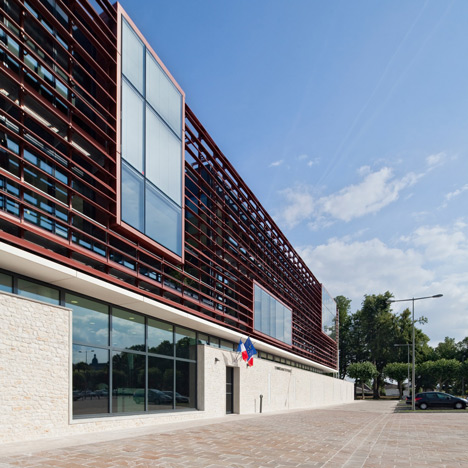
Police Station of Provins by Ameller, Dubois & Associés
Copper louvres shade the glazed upper storeys of a police station in France that emerges from behind a cobbled stone wall.
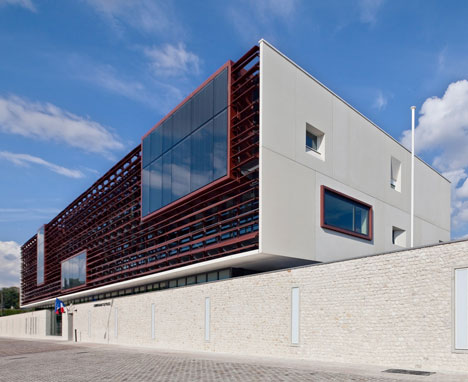
The building was designed by Paris architects Ameller, Dubois & Associés on a medieval World Heritage Site in Provins.
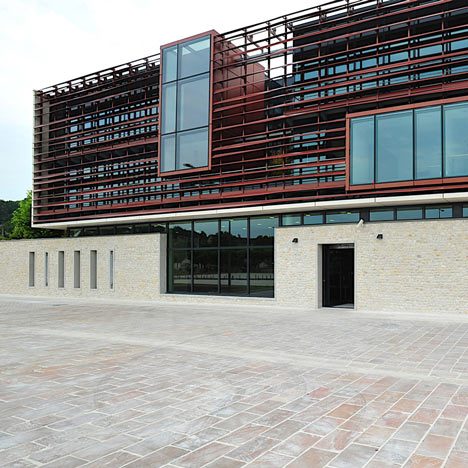
Local white stone set into concrete provides the cobbled wall around the building's ground floor and surrounding car park.
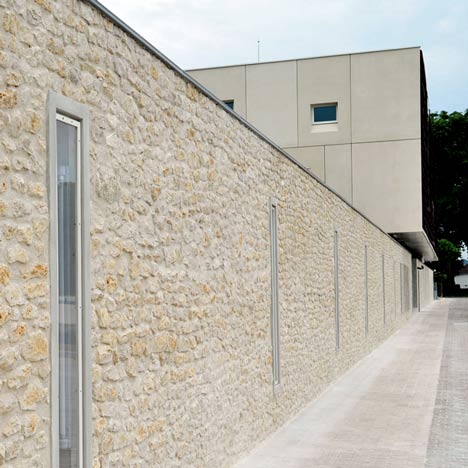
The two copper-fronted upper floors feature large focal windows, which face out from meeting rooms inside.
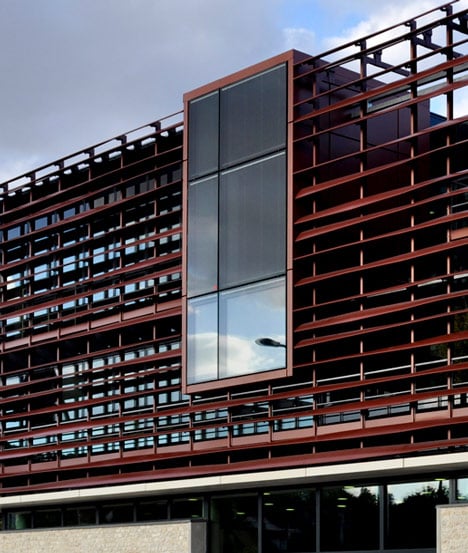
All the standard facilities of a police station are contained within the building, as is a gym.
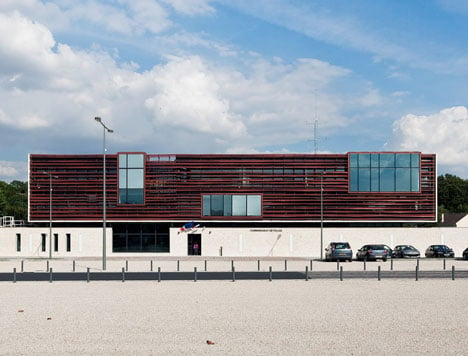
In the past on Dezeen e've also featured a concrete police station in Seville - see our earlier story here.
Photography is by Luc Boegly.
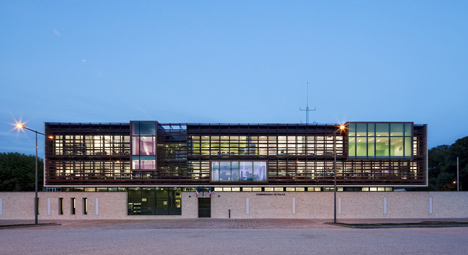
Here's a description from the architects:
Police Station of Provins
Located on a triangular parcel next to the entrance to the city, the Police Station of Provins is part of the creation of a new civic center close to the historic neighborhood.
The police station is on the edge of what is essentially a pavilions zone within proximity of the Northern gate to the medieval city of Provins. A site which, in 2001, was added to UNESCO's World Heritage List. This highly symbolic position gives the building an important status: it must maintain the continuity between the residential quarters of the North and the historic center of the South, and be worthy of such on all its faces, including when seen from above.
This urban continuity is favored through the use of a single continuous base. From there, a compact form rises, lifted off, highlighting the presence of the building in its environment.
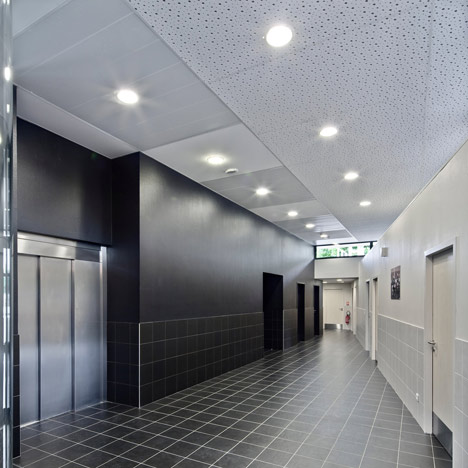
The base - which includes the retaining wall, the groundfloor and the parking lot - is on the outside a concrete wall covered with local white stone. The green roof helps soften the building when seen from a higher point. Artificial lighting, integrated within the outside wall, punctuates the base. This sheath cinches the functionality of the building with an air of nobility. It ensures its protection and its relation to the city's history.
The storeys seem suspended above, emphasizing the contemporary character of the project and reaffirming clearly its vocation as an important public service. The lifted form contains two plateaus freed from each other, filled with various modular offices and locales. That leaves space for a continuous glass sheeting of the outside surfaces that filters natural light through to the offices via transom windows. The more confidential quarters are wrapped in thick concrete, pierced here and there with glass openings to let light in. The front (or Western side) faces the promenade, and is made of glass dressed with copper slats angled slightly downwards, making it an extension of the roofing surface. Its treatment, in contrast with the thick mineral sheeting of the other three facades, emphasizes the frontal aspects of the police station, at once open to the city but protected.
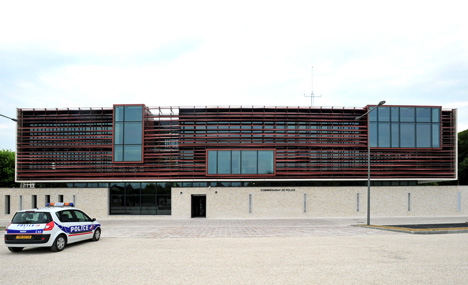
The building is seen at once as a city gate, a link and an institution.
This compact building favors the synergy between services while letting them be independent. The operational costs are reduced. The building materials require little maintenance. The metal slats of the principal facade ensure natural lighting and spectacular views but good protection from the sun while maintaining the confidentiality of the work going on inside. This metallic wrap has been set 60 centimeters from the facade to leave space for a path for maintenance crews.
The patio and the loggia that run alongside the promenade bring light and some plant life to the heart of the police station. The central patio is a reference point and a meeting place that serves as a cohesive element between the services; it lights the interiors further, creates transparencies, and breathes in some space.
The construction kept in mind the evolution of the building, relying on structures held up with posts and beams that leave room to move around and reshape interior spaces. Services can be added, relocated, enlarged all while conserving the spatial structure, the natural light and the fluidity of the general organization at each level.
Area: 2130 sqm
Interior: Holding cells, reception, administrative offices, gym.